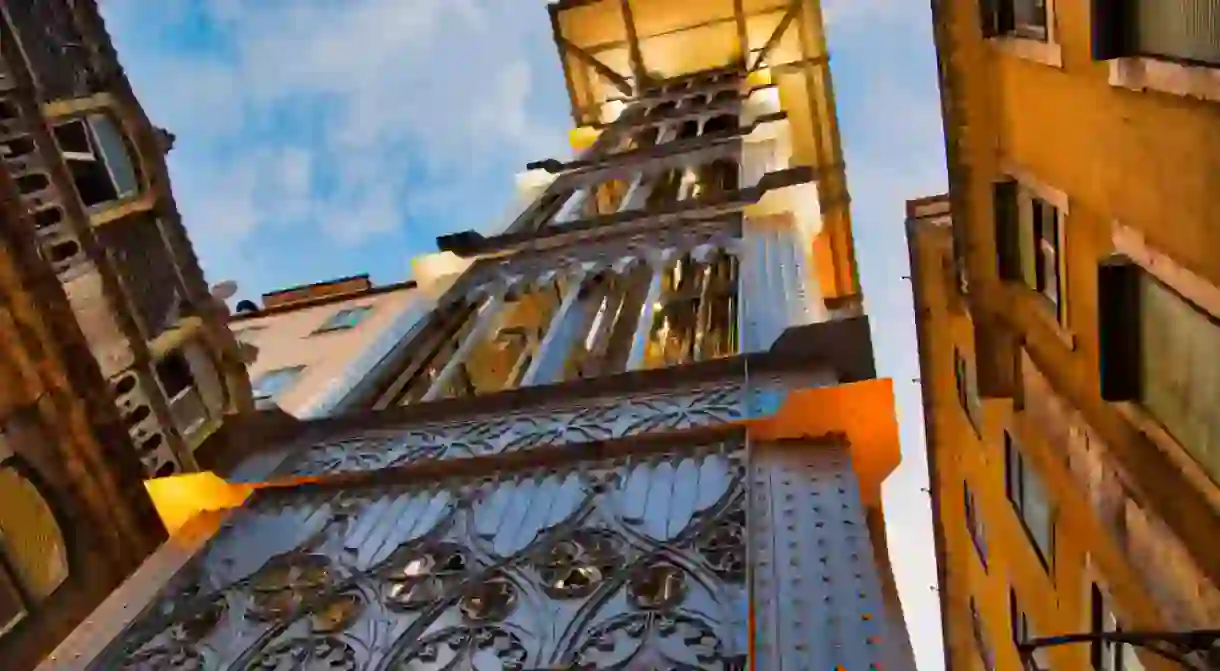Top 10 Things to See and Do in Baixa & Rossio, Lisbon

The heart of Lisbon is arguably Baixa—the downtown district characterized by grand buildings, historical landmarks and the unique 18th century Pombaline architecture memorializing the city’s reconstruction after the devastating Earthquake of 1755. With Rossio located right next door, these two neighborhoods make up Lisbon’s lower city (baixa translates to ‘low’ in English) where you’ll find the following top 10 landmarks to see and things to do.
Take photos in Praça do Comércio
When Google searching Lisbon, one of the first images to pop up will be the city’s largest and brightest square that faces the Tagus River. Known as the Praça do Comércio or Terreiro do Paço, this is one of the first places tourists see when visiting Lisbon. It’s where many of the city’s concerts are held and where locals walk through while enjoying a stroll along the river. Sit and sip a cocktail, enjoy a meal at one of the surrounding restaurants, visit the Lisbon Story Center or Beer Museum or take photos by the statue of King Joseph I.
Walk through Rua Augusta
Enter this major road from beneath the Rua Augusta Arch and clocktower (perhaps after climbing to the top of the monument). Although locals recommend skipping over the restaurants here (they’re designed for tourists after all), this is a good place to see street performers, enjoy more Pombaline architecture and catch a few major landmarks like the MUDE Museum. Extending one kilometre (a little over half a mile) from Praça do Comércio to the Rossio Square (Praça Dom Pedro IV), this is an emblematic road characteristic of an older Lisbon.
Explore ancient ruins
Baixa is also home to a couple of ‘underground’ treasures, namely the Núcleo Arqueológico (Archaeological Center) and the ancient Roman tunnels, both just a block away from each other and a couple of blocks from MUDE. Both are believed to date back to the 1st century AD and while the Núcleo Arqueológico can be visited year-round (to see the artifacts on display from many different periods over time), the Roman tunnels can only be entered during special weekends in the year, so plan accordingly.
Núcleo Arqueológico, Rua dos Correeiros 21, Lisbon, Portugal, +351 21 113 1004
Look up at the Santa Justa Lift
Another architectural masterpiece is the Santa Justa Lift, a historic elevator originally designed to help locals navigate Lisbon’s hilly streets. This is the only one designed completely vertically and it takes passengers from Baixa to the Carmo Square above. Built in 1902, this wrought-iron lift reaches 45 metres (148 feet) high, is topped with a beautiful viewpoint and can be ridden for the small fee of €6.55 ($1.20 USD).
Santa Justa Lift, Rua do Ouro, Lisbon, Portugal, +351 21 413 8679
Visit the Rossio Train Station
Train Station

The Rossio Train Station, completed in 1888, is a stunning example of Manueline and Romantic architecture. Not only is it a historical and lovely landmark, but it’s also the main way to reach Sintra.
Don't miss the Jewish Memorial
Church, Memorial
Visit the world's oldest bookstore
Bookstore

Gaze up at the Carmo Convent ruins
Cathedral, Museum, Ruins













